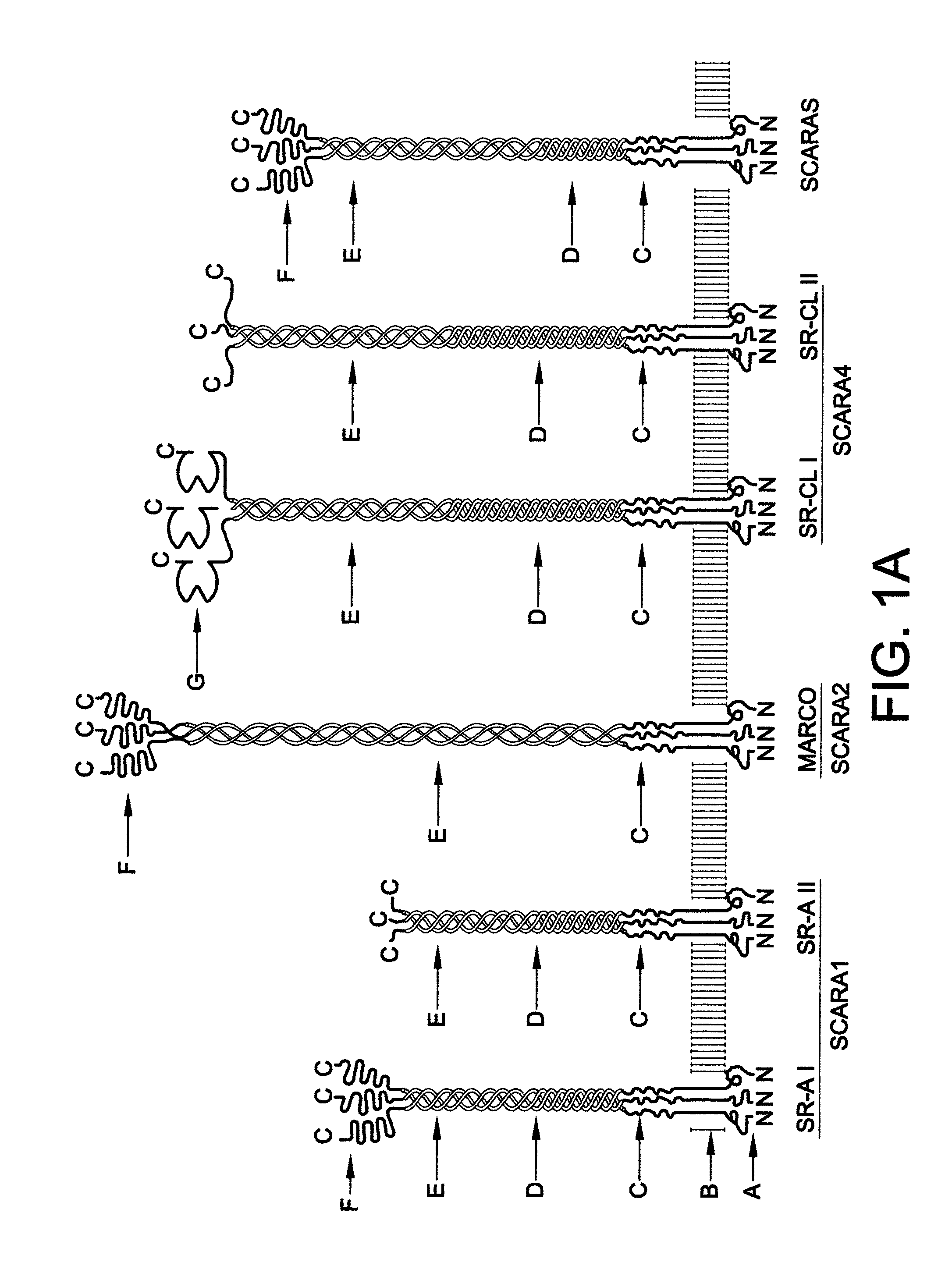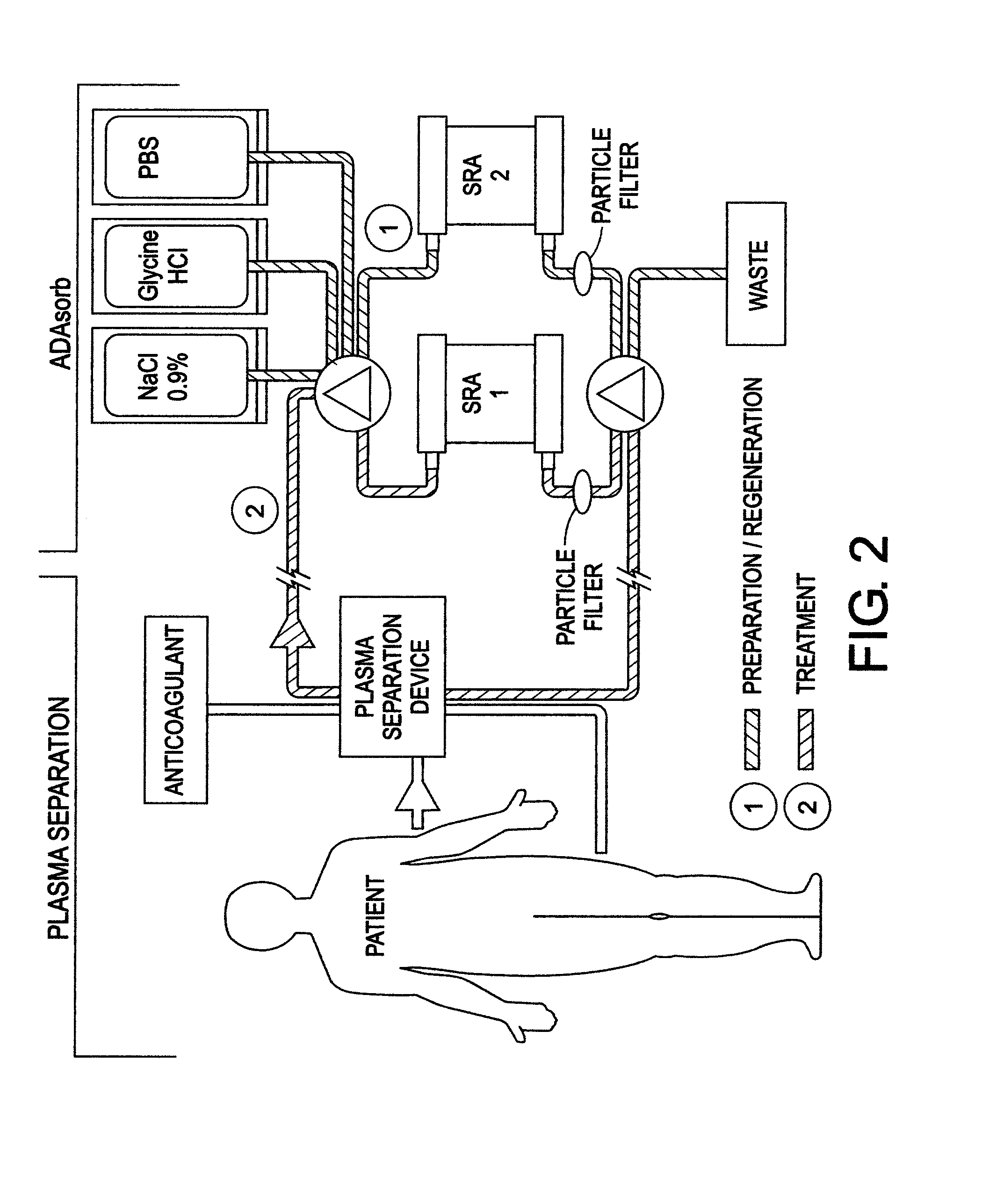Chimeric proteins for treatment of diseases
a technology of chimeric proteins and diseases, applied in the direction of peptide/protein ingredients, antibacterial agents, fusion polypeptides, etc., can solve the problems of increasing the occurrence of organ failure due to sepsis, the reduction of life quality, and the current sepsis therapy consists mainly of broad-spectrum antibiotics and organ suppor
- Summary
- Abstract
- Description
- Claims
- Application Information
AI Technical Summary
Benefits of technology
Problems solved by technology
Method used
Image
Examples
example 1
Example 1. MARCO PRM with Partial MARCO Anchor
[0080]A construct encoding the cSR truncated soluble MARCO (SEQ ID NO: 7) was generated by established molecular biological methods, and contained the following elements in the pcDNA3.1 / Zeo(-) mammalian expression vector (Invitrogen):
[0081]1) a secretion signal peptide from the BM-40 protein (SEQ ID NO: 16);
[0082]2) an 8-histidine-long tag for protein purification and linker (SEQ ID NO: 28 and SEQ ID NO: 14);
[0083]3) the extracellular part of mouse MARCO residues 75-518 (that correspond to nucleotides 223-1557) with deletion of residues 300-419 (nucleotides 897-1257) (SEQ ID NO: 21). This form of MARCO lacks the last 40 Gly-X-Y repeats of the 89-repeat-long collagenous domain of mouse MARCO, and as a transmembrane protein has shown to be a strong binder of the prototypic scavenger receptor ligands, heat-killed E. coli and acetylated LDL (low density lipoprotein).
[0084]An analogous cSR truncated soluble human MARCO sequence is presented a...
example 2
Example 2. SR-A PRM with SCARA5 Anchor
[0085]A construct encoding the cSR soluble mouse SCARA5 with the mouse SR-A1 SRCR (scavenger receptor cysteine-rich) domain (SEQ ID NO: 9) was also cloned into the pcDNA3.1 / Zeo(-) vector, and contains the following elements:
[0086]1) a secretion signal peptide from the TIMP2 protein (SEQ ID NO: 15);
[0087]2) a 6-histidine-long tag for protein purification and linker (SEQ ID NO: 28 and SEQ ID NO: 13);
[0088]3) the extracellular part of mouse SCARA5, except that the SRCR domain of the protein was replaced with the SRCR domain from mouse SR-A In other words, this chimeric version contained residues 83-380 from SCARA5 (nucleotides 247-1140) followed by the SRCR domain from SR-A (residues 345-454 that correspond to nucleotides 1035-1362) (SEQ ID NO: 33). As a transmembrane protein, this form of SCARA5 strongly binds heat-killed E. coli and acetylated LDL (stronger than intact SCARA5), as discussed further herein with reference to FIG. 11.
[0089]An analog...
example 3
Example 3. SCARA5 PRM with Extracellular Part of SCARA5
[0090]A construct encoding the cSR soluble mouse SCARA5 (SEQ ID NO: 5) was generated by established molecular biology methods, and contained the following elements in the pcDNA3.1 / Zeo(-) mammalian expression vector (Invitrogen):
[0091]1) a secretion signal peptide from the TIMP2 protein (SEQ ID NO: 15);
[0092]2) a 6-histidine-long tag for protein purification and a linker (SEQ ID NO: 28 and SEQ ID NO: 13);
[0093]3) the extracellular part of mouse SCARA5 residues 83-491 (corresponding to the nucleotides 247-1476) (SEQ ID NO: 19). As depicted in FIG. 11 and FIG. 12, as a transmembrane protein, SCARA5 is able to bind heat killed E. coli and internalize LPS.
[0094]An analogous cSR soluble human SCARA5 sequence is presented as SEQ ID NO: 3. The human SCARA5 sequence is presented as SEQ ID NO: 17.
PUM
| Property | Measurement | Unit |
|---|---|---|
| densities | aaaaa | aaaaa |
| pH | aaaaa | aaaaa |
| concentration | aaaaa | aaaaa |
Abstract
Description
Claims
Application Information
 Login to View More
Login to View More - R&D
- Intellectual Property
- Life Sciences
- Materials
- Tech Scout
- Unparalleled Data Quality
- Higher Quality Content
- 60% Fewer Hallucinations
Browse by: Latest US Patents, China's latest patents, Technical Efficacy Thesaurus, Application Domain, Technology Topic, Popular Technical Reports.
© 2025 PatSnap. All rights reserved.Legal|Privacy policy|Modern Slavery Act Transparency Statement|Sitemap|About US| Contact US: help@patsnap.com



